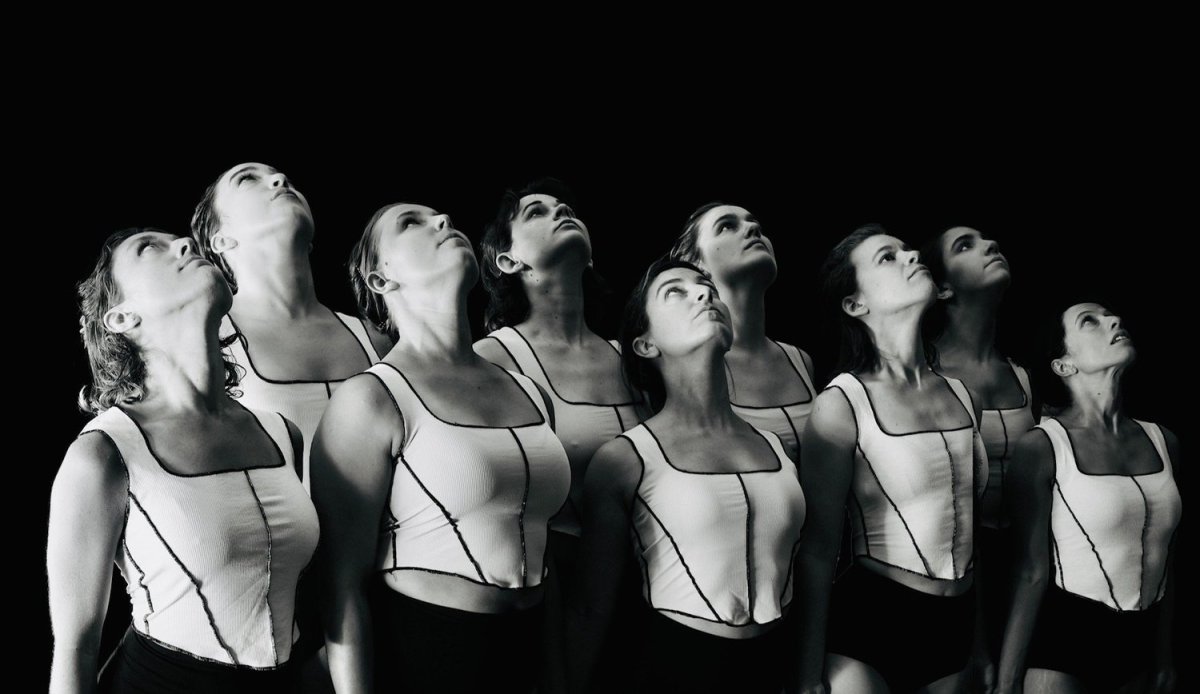STARR FOSTER’S CROSS-DISCIPLINARY DANCE PROJECT
STARR FOSTER DANCE: Page to Stage II
A Dance Review by Julinda D. Lewis
At: The Firehouse Theatre, 1609 W. Broad Street, RVA 23220
Performances: December 1-3, 2022
Ticket Prices: $15-$25
Info: (804) 304-1523; www.starrfosterdance.org, www.facebook.com/starrfosterdance, Instagram/starrfosterdance
THE PROGRAM
Choreography by Starrene Foster
Lighting Design by Michael Jarett
Costumes by Starrene Foster
Spirits
Inspired by a story by Patricia Smith
Original Music Composition by Daniel Deckelman
Dear Me
Inspired by a poem by Tonyehn Verkitus
Music by DJ Williams Shots Fired; Iron Fist
Sisterhood
Inspired by a story by Judith Bice
Music by Mike Lazarev; When You Are
FeeJee Mermaid
Inspired by a story by Clay McLeod Chapman
Original Music Composition by Daniel Deckelman with narration by Brent\
Costume Concept Design by Johann Stegmeir, Constructed by Starrene Foster
About Us
Inspired by a story by Mary Lou Hall
Original Music Composition by Daniel Deckelman
Sky Burial
Inspired by a poem by M. C. Boyes
Music by Roger Goula; Looking Back to Self Awareness
Things That Fit Tight Around the Ribs
Inspired by a poem by Molly Todd
Original Music Composition by Daniel Deckelman
I think I have seen most of Starr Foster Dance’s Richmond performances since the company was born in 2001. I have been stunned, enthralled, mesmerized, puzzled, amused, and I have even teased Foster about her seeming preference for lighting on the darker side of the lumens scale or lux meter (or however you measure brightness). The point is, Foster has a unique style, one that most often presents women in a powerful light (no pun intended), and dares to stretch outside any semblance of a comfort zone – whether her own, the dancers, or the audience,
Foster’s latest project, two years in the making – or waiting – due to the restrictions of the pandemic, Page to Stage II, is a collection of seven short dances inspired by seven short stories, excerpts, and poems by local writers. Not only do the dances span a wide range of emotions, but the program is an actual book that contains all of the written works – the pages that found their way onto the stage – that the audience can take away to keep.
In addition to the seven writers, Foster invited six guest performers to dance with her core company of four women: Taylor-Leigh Adams, Fran Beaumont, Anna Branch, and Molly Huey. The six guest performers, Sophia Berger, Charlotte Bray, Shannon Comerford, Elena Dimitri, Keeley Hernandez, and Mosca Mavrophilipos-Flint were a perfect fit, blending easily with Foster’s core dancers and providing the needed enhancement for the stories. To my surprise and delight, I discovered that one of them had been a student of mine when I taught elementary school.
Previous performances of Starr Foster Dance took place in the intimate space of TheatreLab’s black box space, The Basement, but Page to Stage II (the sequel to a 2015 production) was performed at The Firehouse Theatre. The Firehouse seats about 4 times the number of people who fit into The Basement (sadly, TheatreLab shuttered operations at the end of the 2022 season) – and every performance was sold out! This is great for Foster and company, but it also speaks to a growing hunger for contemporary dance in RVA.
Several works on the program stood out above the others for various reasons. The opening work, Spirits, inspired by Patricia Smith’s story of the same name, explores the intentions of spirits, ancestors, and the associations we make with them. Accompanied by strings and the sounds of flowing water, the dancers, dressed in soft pats and matching tops with hems died to look muddied, move like water sprites. They seem to rise and return to a watery grave, evoking images of fictional willies (e.g., the Willis in the ballet Giselle represent the spirits of women left at the alter) as well as the spirits of all whose dreams were cut short before they were fulfilled. The nine dancers seem to float, rise up, and at the end return to their watery grave, still reaching for life – theirs? Or ours?
My absolute favorite was Dear Me. A solo, the work was performed on Friday night by Fran Beaumont. I loved Beaumont’s energy, the lackadaisical way she kicked her leg up to the side and over her head, the motif of running backwards, and even her simple, dark jumpsuit. Funny, assertive, and sassy, the solo, set to a dynamic funk rock score by DJ Williams and Shots Fired, reminded me of the jazzy and dramatic solos of the late American modern dancer, Daniel Nagrin. (If you are not familiar with him, dig back into dance history and find a video of him performing Strange Hero or Man of Action (1948).
FeeJee Mermaid is funny and creepy and deliciously weird. Set to an original score that is reminiscent of circus music and a narration of Clay McLeod Chapman’s fictitious lecture on how to make a FeeJee Mermaid. Some people are terrified of the circus, clowns, and sideshows. FeeJee Mermaid does nothing to allay these fears. Based on a real-life hoax perpetrated by P.T. Barnum and others, Chapman’s work – and Foster’s kinesthetic interpretation – is an instruction manual on how to construct a horrible taxidermist’s nightmare: a fake mermaid created by attaching the torso of an ape to the bottom half of a large fish. Foster’s quartet of dancers, clad in flesh-toned leotards dyed in a fish-scale pattern do not actually construct a FeeJee Mermaid, but their circus antics, and Daniel Deckelman’s music are sufficiently creepy to leave a lasting impression. Oh, and one of the remaining examples of a “real” FeeJee Mermaid has been in residence at Harvard’s Peabody Museum since 1897. Look it up – if you dare.
About Us is a story by Mary Lou Hall that tells of a mother who left her family (physically and/or mentally) in order to save herself. In Foster’s dance, Molly Huey (on Friday night) was supported and surrounded by a quartet of dancers who seemed to represent the various versions of her inner self. Huey danced, often with her eyes closed, moving her hands in a repetitive gesture that seemed designed to clear away the cobwebs that both clouded her vision and restricted her movements. It is a very intimate dance, one that breaks the usual rules by focusing inward rather than outward. The supporting dancers move in a very unexpected way, deliberately not drawing attention to themselves, trying not to stand out, but instead focusing on the main character – and the main character is. . .you/us.
I could find something special about each of the dances in this series. The dark dresses of Sisterhood echo the darkness of the theme that seems to be a prelude to a true-crime story about two sisters whose lives are unhealthily entwined. The women in Sky Burial interact with one another like two people feeding each other with long-handled spoons. Then there is the poignancy and steely sharpness of the pointing finger in Things That Fit Tight Around the Ribs. Like many good books, and all poems, Stage to Page II should be seen again and should definitely be discussed. What did YOU see? What did YOU feel? What did YOU take away? This is Starr Foster Dance at its finest.
Julinda D. Lewis is a dancer, teacher, and writer who was born in Brooklyn, NY and now lives in Eastern Henrico County.
———-
Photo Credits: Douglas Hayes.



Make a donation to support the continued publication of rvaRT review
Make a monthly donation
Make a yearly donation
Choose an amount
Or enter a custom amount
Your contribution is appreciated.
Your contribution is appreciated.
Your contribution is appreciated.
Donate hereDonate hereDonate here
